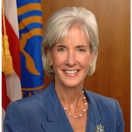
Ed. note: This blog is cross-posted from HHS
Last week, I visited the Metropolitan Community College where I toured the Virtual Hospital and Patient Simulation Lab. This facility is a great example of how Community Colleges are training the skilled workforce that is so critical to creating and running successful Health IT systems.
When doctors and hospitals use Health IT, it reduces errors, cuts paperwork, and lowers costs. Over the past 3 years, the Obama Administration has made it a top priority to make it easier for doctors and hospitals to adopt Health IT.
We’re providing incentive payments to hospitals and eligible providers to adopt electronic health records and use them to improve patient care. We created 62 Health IT Regional Extension Centers around the country to help health care providers take advantage of those incentives. Already, more than 120,000 primary care providers, including over 70% of rural primary care providers in small practices, have registered to use those incentives.
At community colleges we’re training the skilled workforce that is essential to sustaining this investment. More than 9,000 community college students have already completed Health IT training through federally supported workforce programs, with thousands more enrolled.
And last week, we announced that these investments are already making a difference. New data shows that nearly 2,000 hospitals and more than 41,000 doctors have received $3.1 billion in incentive payments for meaningful use of Health IT, particularly certified Electronic Health Records (EHR). Meaningful use requires doctors to give their patients a summary of their office visit. Like a receipt, this clearly explains at a glance the care the patient received and the next steps for both the patient and provider.
A survey conducted by the American Hospital Association shows that the percentage of U.S. hospitals that have adopted electronic health records has more than doubled, in just two years -- from 16 to 35 percent. What’s more, 85 percent of US hospitals report that by 2015, they plan to take advantage of the incentive payments we are providing.
Given that health care is one of the fastest growing fields in the US and around the world, Health IT could be a major job creator for years to come. According to the Bureau of Labor Statistics, the number of Health IT jobs across the country is expected to increase by 20 percent from 2008 to 2018, a pace much faster than the average for all occupations through 2018. Since 2009, more than 50,000 Health IT jobs have been created around the country.
Through these efforts, we are giving providers and patients the tools they need to provide better care and better health at the right time. And these investments in Health IT are a perfect example of how government can unleash entrepreneurship and innovation.
Kathleen Sebelius is Secretary of Health and Human Services.


